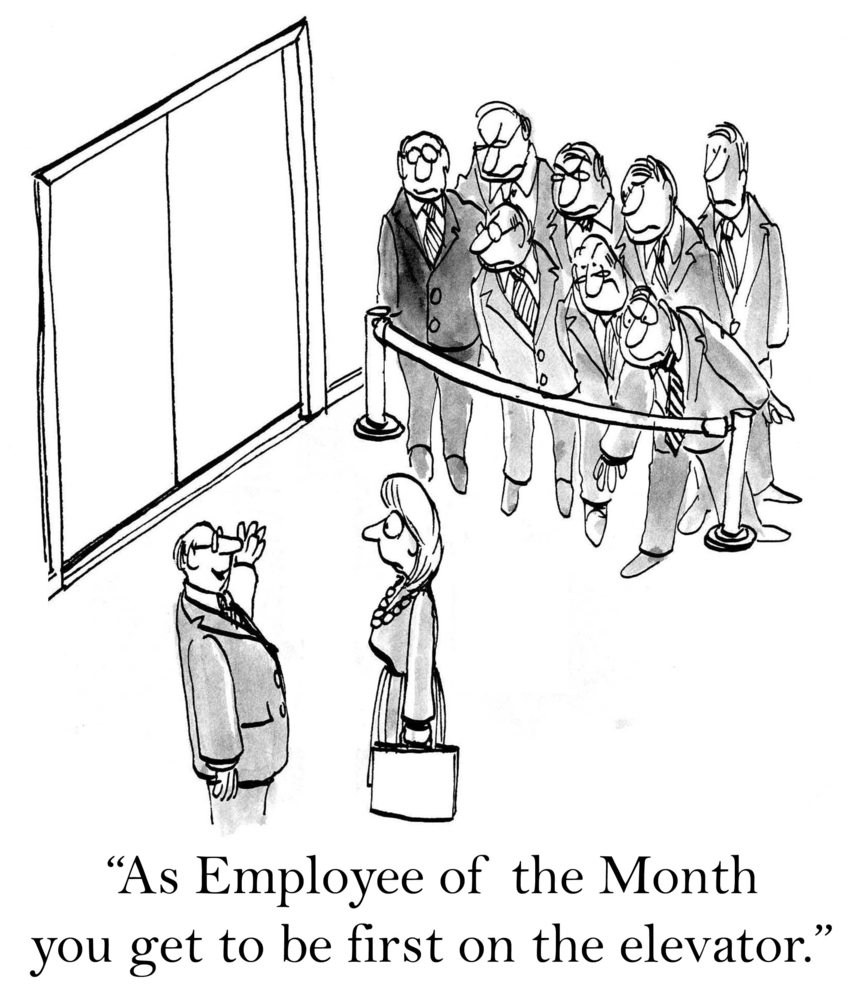
Do You Know How to Reward and Engage Employees?
Everyone wants to be recognized for their contribution and a job well done. Smart leaders know how to reward and engage employees by making the rewards and recognition meaningful, relevant, and proportional to the effort and value.
Ineffective Rewards Can Dilute Your Performance Culture
It doesn’t look as though the winner of the above Employee of the Month cartoon is happy about her reward – nor do her teammates. She looks dismayed; they look angry. This is not the reaction you want from your total rewards program.
Employee Engagement Data on How to Reward and Engage Employees
We know from decades of organizational culture assessments and from our most recent employee engagement survey data how important effective employee rewards and recognition can be. In fact, survey results show that as many as 65 out of 100 employees at highly engaged companies were confident that they would be recognized when their work contributed significantly to the organization’s success.
And it makes sense that employee Reward and Recognition programs that are well conceived and well implemented encourage ever higher performance levels and increase employee engagement.
Three Research-Backed Tips to Reward and Engage Employees
In addition to taking meaningful and visible employee engagement actions after every engagement survey, here are three research-backed tips on how to reward and engage employees in a way that matters:
Acknowledgment is important, too, in tough times. One organization we work with is facing a major change as they are about to be acquired by a larger overseas company. There is a lot of angst in the work force. How will their lives be changed? Will they still have a job? Will they have to move?None of the questions may have answers as yet but simply recognizing that times are difficult can help to better unify and align the group.
Stay close to the team so you know when they are struggling and can support them. Acknowledge that the uncertainty of the future is stressful and that you will keep them updated as soon you learn more.
Be creative and consider what matters most to the individual.
Good managers understand that low performers need recognition in the form of clear expectations, targeted support, measurable accountability, and aligned consequences. Everyone needs to know if their performance is not improved over a specific period of time, they will be asked to leave.
Don’t risk losing your high performers because you’re not doing your job of helping and correcting your low performers.
The Bottom Line
Reward and engage employees with recognition that matters to solidify their commitment to the organization’s mission. You will know when your reward and recognition program is working to increase employee engagement when employees believe that the organization makes investments to make them more successful, values people as their most important resource, pays people fairly considering the value they bring, and recognizes people when they contribute.
To learn more about how to more effectively reward and engage employees, download Top 10 Most Powerful Ways to Boost Employee Engagement
Explore real world results for clients like you striving to create higher performance